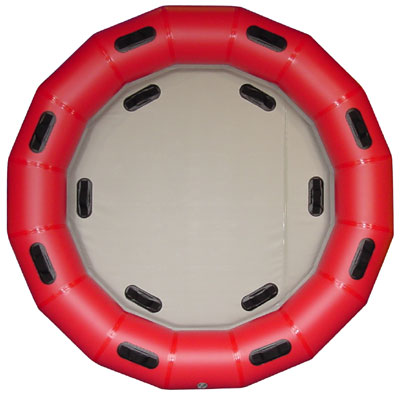A life raft has been designed to save those stranded at seas or rivers. Its job is to keep the person away from water as long as possible until safety is assured. However it is not as easy as it sounds. By designing a life raft, a lot has to be put into consideration.
- Shape
- Size
- How many people will it occupy
- Water and food sources
- Materials
- First Aid equipment
- exterior colour
What are rafts made of ?
Generally rafts can be built from materials that are naturally buoyant. A typical raft can be made from plastic bottles, barrels, foam, wood or anything that floats. what's great about these materials is that no matter the damage caused to them they will still float and provide lift.
However Building a professional life raft can use more complicated materials to secure safety, they are primarily made from either polyester or nylon coated with a waterproof plastic or synthetic rubber material. The most common are...
- Hypalon
Advantages
|
Disadvantages
|
Highly
durable
|
Expensive
|
Resistant
to harsh environments
|
Seams need
skilled technicians to build
|
Resists
mildew
|
The end
product is less rigid and more flexible on water
|
UV
deterioration
|
Professional
repair is necessary if tears or leaks develop
|
High
air retention
|
- Urethane
Advantages
|
Disadvantages
|
Can be
thermo bonded:
|
Expensive
|
Light
weight
|
Difficult to
weld or glue
|
Durable
|
|
It can
be used as a sealer or applied over other coatings.
|
- PVC
Advantages
|
Disadvantages
|
Seams
can be thermo bonded at the factory
|
Stiffer
material
|
Glue
repairs are easily done using Stabond.
|
Material
weakens in short period of time
|
Affordable
due to materials simplicity
|
Material
can crack when stored in cold places.
|
Lighter
in weight
|
What are the colours of Rafts?
Rafts are usually very bright in colour for safety reasons
- Highly visible
- Clear both in the morning and at night
- Most easily seen in dim light or against the water
An equipped life raft...
A considerable life raft is designed, to be fully
equipped to take care of the survivor. Its layout should demand little or
nothing of the survivor, who will be unable to do much due to the experience of
trauma or panic. Everything should be easily accessible and straightforward to
all survivors (people who are both trained and untrained for any catastrophe)
- Enough life jackets (PFDs) for everyone on board
- Dry suits (for cold climate)
- Bottled water
- Radio
- Seasickness medication
- Fish net
- Plastic wrap
- String or rope
Raft aspects...
Size:
capacity of a life raft is classified based on a variety of possible
aspects. The are....
- Floor area
- Seating space
- Buoyancy
Each raft is designed for certain amount of people, and each survivor takes a minimal amount of space and a certain degree of buoyancy
Shape:
Rafts come in different shapes, but the common ones are
-Square shaped
-Boat shaped
Keeping dry
It is very essential for any life raft to be designed to fully isolate water from the survivor, as hypothermia and other major life risks could occur. It is also necessary to keep the raft fully insulted.
Where can drinkable water be found?
Humans can't live without:
1. Air,
2. Water
3. Food.
Humans can't live:
1. Three-minutes without air,
2. Three-days without water, and
3. Three-weeks without food.
1. Air,
2. Water
3. Food.
Humans can't live:
1. Three-minutes without air,
2. Three-days without water, and
3. Three-weeks without food.
When it comes to filtering, purifying and desalting water, it must be done right or one can face major risks of becoming ill or worse.
Filtering is the removal of all "visual" particles and matter from the water such as dirt, leaves, insects, etc so it can be properly purified and then safely consumed.
Purifying is the removal of all "invisible" bacteria, germs and other harmful elements from the water so it can be safely consumed.
Desalting is the removal of salt from sea water to become drinkable to humans.
A brilliant example is (The SeaKettle life raft) which is not only designed to provide shelter but also to make drinking water from the sea, by using the sunlight energy.
A brilliant example is (The SeaKettle life raft) which is not only designed to provide shelter but also to make drinking water from the sea, by using the sunlight energy.
What is the food source?
Surely canned food can be stored within any life raft, unfortunately it is quite limited, that is why every life raft is equipped with fishing equipment as it will be the only food source available for a long period of time.
How to pass time during the survival journey?
Communication is a key element when in comes to surviving a catastrophe. It is never known when the water might be calm to exit the raft it can be hours or even weeks.
Sources:









